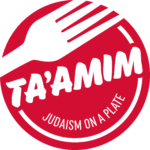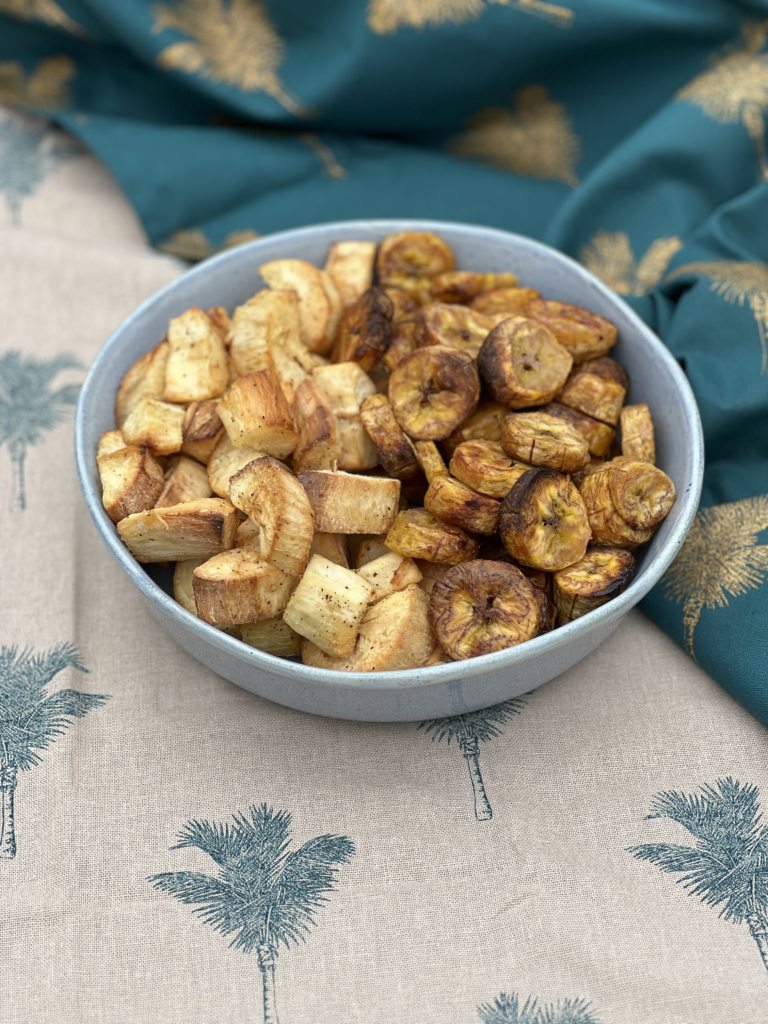Serves 4-6 as a side
Prep time: 15 mins | Cooking time: 40 mins
These tropical staples are a fantastic alternative to potato. Plantains are the larger, more savoury siblings of bananas, whilst cassava is a starchy root vegetable. A tuber crop like yams and potatoes, cassava roots have a woody exterior and have white flesh on the inside. These two versatile ingredients are staples in Africa and the Americas, and can be fried, roasted, boiled or processed into flour. Both ingredients are mild in flavour, but like potatoes are robust and able to take on flavour from stews and marinades. You may need to look in an international grocery store, but most supermarkets with a world foods section will stock these ingredients in their fruit and veg aisles.
The most popular food crop in West Africa, Cassava is a really delicious alternative to potato, lower in calories and fat and higher in nutritional value. It has a subtle sweet and nutty flavour, however, it is inedible when raw, and if improperly prepared, can release small amounts of cyanide into the body which is toxic to humans if consumed in large quantities. The root must be peeled and cooked through thoroughly, but simply soaking and boiling small pieces of cassava makes it safe for consumption. It is also best paired with protein as this helps to break down cyanide in the body.
Plantain works well as a delicious side or as a not-too-sweet dessert, and the level of sweetness can be determined by the ripeness of the plantain. Like bananas, they turn from green to yellow, and form brown spots. The yellower they are, the riper and sweeter they are.
In this recipe we have prepared the plantain and cassava as a savoury side course.
Ingredients
- 2 Cassava roots
- 3 ripe Plantains – look for a dark yellow skin with brown spots.
- Water
- Salt
- Olive Oil
Method
- Peel the cassava and chop into small chunks.
- Soak the cassava in plenty of cold water, salt well and bring to the boil. Cook for around 15 minutes, until almost tender, then drain thoroughly and set aside.
- Preheat oven to 220°C (200°C Fan/425°F/Gas Mark 7)
- Toss the cassava in a good amount of oil until well coated (you may wish to season the oil with herbs or spices of your choosing at this stage).
- Place the cassava on a baking sheet and place in oven for 20 minutes.
- Meanwhile, carefully peel the plantains by cutting off the ends and scoring, taking care not to cut through the plantain.
- Discard peels and slice plantain into 1cm (1/3-1/2in) rounds, or slice at an angle to make longer chips.
- Place on a baking sheet and coat well on both sides with oil, then sprinkle with salt.
- After cassava has been roasting for 20 minutes, turn the cassava and put the plantain in the oven.
- Bake for 10 minutes, then turn the plantain and cook both for a further 10 minutes.
- The plantain should be golden brown, soft and tender, whilst the cassava should have a soft, fluffy centre and a crisp, golden brown exterior.
Best served fresh and hot.


